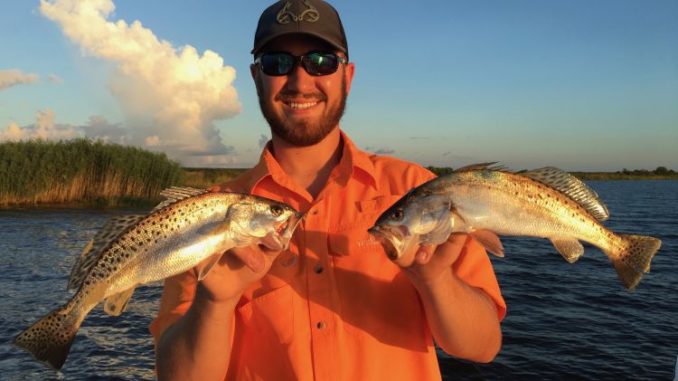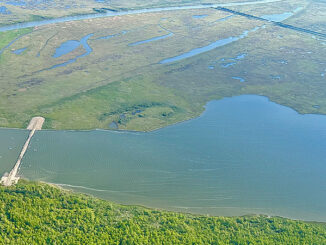
Fish showed up overnight, guide says
Baseball, it is said, is a game of inches. So, too, is speckled trout fishing.
Find a school of 11-inch trout, and you’ll curse your bad luck, even if they’re biting every cast. If those fish are 12-inchers, however, you and your buddies will high-five and load the box for a fish fry.
Capt. Lloyd Landry is on the water every day, so you’d think he’d be jaded to the joys of catching keeper specks, but the man still can’t get enough of it, and he was elated to discover Tuesday that the fall run in the marshes south of Dularge has officially begun.
At the dock in the predawn hours, Landry reported Lake Mechant has been awash in 10- to 11-inch specks.
“You can catch all you want, but maybe one out of 30 will measure (12 inches),” he said. “We had a full moon last night, so maybe that will change today.”
Landry should have bought a lottery ticket, because he proved to be a prophet.
He and his son, Lloyd Landry V, known to friends and family as Five, loaded the box with keeper specks. None of the fish they caught had to be measured, and only one was a clear throwback.
“Things are changing,” the elder Landry said near the end of Tuesday’s trip. “They’re changing across the coast. I’m watching reports from my buddies from here to Venice to Hopedale, and it’s basically the same thing. People are seeing a push of shrimp and other bait coming in, and a lot of small trout. We could probably sit around here and catch a hundred of them, but we’re finally starting to see some keepers.
“I was surprised at our first stop this morning, we caught a good mess of solid keepers. I think that’s only going to get better after we get a front.”
Water temperatures have been holding in the upper 80s and low 90s, which is exceptionally warm for late September. Normally by now, the region has seen at least a couple of cool fronts. Cooler water would signal to even more trout that the spawn is over, and it’s time to move inside. It would also inspire them to feed for longer periods each day.
They certainly don’t have a shortage of stuff to eat, Landry said.
“There are white shrimp all the way to Falgout Marina,” he said. “When (Gordon) pushed through, the water got high and came over our docks and into the boat sheds. I’d come down each morning, and I’d have little dead shrimp on my dock. I mean, think of how far up (in the estuary) that is.”
Those shrimp will all eventually push toward the Gulf, and many will cross through Lake Mechant and Sister Lake.
“Those lakes are always consistent in the fall, and no matter what direction the wind blows, you can find a fishable shoreline,” Landry said. “That gives you a lot of options, especially on a falling tide. You’ll get that clean, black water coming out of all those tributaries — those bayous, ditches and ponds. That’s where your fish will congregate.”
If he and Five are out for fun, they’ll target the fish with tight-lined soft-plastics, but most days for Landry, that’s not the easiest option.
“I’m more of a tight-line guy, but with customers in the fall, I’ll fish a cork almost every day,” he said. “That’s definitely the most efficient way to catch them.”
What he throws depends on water clarity, but he has a favorite.
“The shrimp creole Matrix Shad is probably the No. 1 bait in this area,” he said. “If I had to pick a second color, it would be green hornet.”


